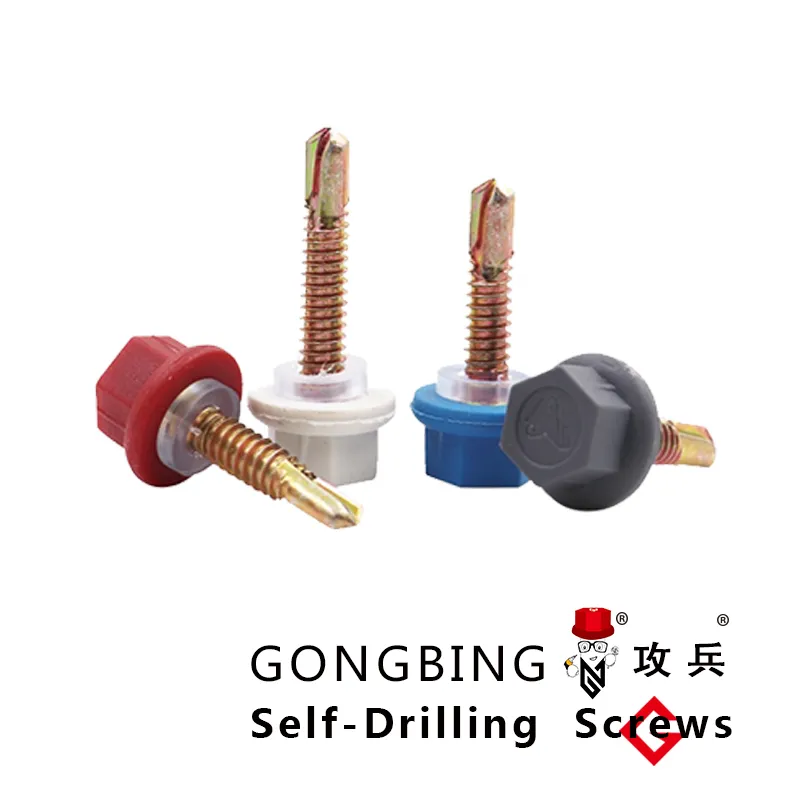Hex Head Bolt Specifications and Applications in Mechanical Engineering
Understanding Head Hex Bolts A Comprehensive Overview
Head hex bolts are a fundamental component in the realm of construction and manufacturing, known for their simplicity and effectiveness. These bolts, characterized by a hexagonal head, offer a robust fastening solution applicable across a wide range of industries. In this article, we will delve into the various aspects of head hex bolts, including their design, applications, advantages, and best practices for usage.
What is a Head Hex Bolt?
A head hex bolt, often referred to simply as a hex bolt, is a type of fastener with a hexagonal head, providing a surface that can be easily grasped by a wrench or socket. Typically made from materials such as steel, stainless steel, or alloy steel, these bolts can be found in various grades and finishes to meet different strength and environmental requirements. The body of the bolt features threads that allow it to be securely fastened in place, either by screwing it into a pre-tapped hole or by driving it into a nut.
Design Features
The design of head hex bolts plays a crucial role in their function. The hexagonal head provides multiple angles of engagement, allowing users to apply greater torque when tightening or loosening the fastener. This design is particularly beneficial in applications requiring high clamping force or where space is limited. Moreover, head hex bolts are available in various lengths and diameters, allowing for customization based on specific application needs.
Applications of Head Hex Bolts
Head hex bolts are versatile fasteners used in numerous applications across different sectors. Commonly found in construction, they are employed to join structural steel beams, anchor machinery, and assemble frameworks. In the automotive industry, head hex bolts secure engine components and assemblies, ensuring that critical parts remain intact under various stress conditions.
Additionally, these bolts are frequently utilized in household projects, such as furniture assembly, gardening structures, and general repairs. Their reliability and strength make them a preferred choice for DIY enthusiasts and professional tradespeople alike.
Advantages of Head Hex Bolts
One of the primary benefits of head hex bolts is their strength. The hexagonal shape allows for high torque application without stripping the head, which can occur with other fastener designs. Furthermore, these bolts are typically manufactured according to stringent industry standards, ensuring a high level of quality and reliability.
head hex bolt

Another advantage is their ease of use. The design allows for quick installation and removal, making them ideal for projects where components may need to be disassembled and reassembled frequently. The variety of sizes and materials available also means that there is a head hex bolt suitable for nearly any application, from light-duty tasks to heavy industrial use.
Best Practices for Usage
To maximize the performance and longevity of head hex bolts, it's essential to follow best practices during installation
1. Choose the Right Size Ensure that the bolt size matches the hole or nut being used. A bolt that is too long may not provide a secure fit, while one that is too short may not engage properly.
2. Use Appropriate Tools Utilize the correct wrench or socket that fits the hex head snugly. This prevents slipping and rounding off the edges of the bolt head during tightening.
3. Tighten to Specified Torque Over-tightening can lead to bolt failure, while under-tightening can compromise the integrity of the assembly. Always refer to manufacturer specifications for the correct torque settings.
4. Inspect for Damage Before installation, check bolts for signs of damage or wear. Damaged bolts should be replaced to prevent unexpected failure.
5. Consider Corrosion Protection In environments prone to rust, consider using stainless steel or galvanized bolts, or apply protective coatings to enhance longevity.
Conclusion
Head hex bolts are more than just simple fasteners; they are essential components that contribute significantly to the stability and safety of structures and machinery. Understanding their design, applications, and proper usage practices can help engineers, builders, and DIY enthusiasts leverage their capabilities effectively. Whether in a high-stakes industrial setting or a modest home project, choosing the right head hex bolt can make all the difference in achieving success.
-
Weatherproof Plastic Expansion Anchors for OutdoorNewsJun.06,2025
-
Sustainability in the Supply Chain: Eco-Friendly TEK Screws ProductionNewsJun.06,2025
-
Load-Bearing Capacity of External Insulation FixingsNewsJun.06,2025
-
Double Head Bolts: Enhancing Efficiency in Industrial MachineryNewsJun.06,2025
-
Corrosion Resistance in Chipboard Screws: Coatings for Wholesale DurabilityNewsJun.06,2025
-
Butterfly Toggle Bolts : Enhancing Structural ResilienceNewsJun.06,2025
